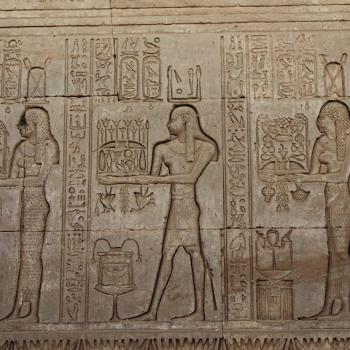There’s been endless conflicting speculation about what happens after we die.

Unfortunately, there is little, if any, hard, verifiable evidence to help us understand what the afterlife is like — if it exists at all. After all, people who die simply do not come back later to talk about it and fill us in.
Near Death Experiences (NDEs):
A Gallup Poll found that about three percent of Americans have experienced a near-death experience (NDE). They may have gone through the very beginning of the dying process, but later returned to life.
Many report traveling through a tunnel towards a light, or floating above their body watching medical personnel working to save them. They may recall meeting relatives and friends who have died –or even meeting God. When they regain consciousness, some report that the experience was not a dream a real experience.
In most cases, the experience is brief. However, some people come back to life saying they remember having spent weeks in Heaven.
Many are profoundly changed by the NDE for the rest of their life.
Gideon Lichfield, writing for The Atlantic magazine said:
“Near-death experiences have gotten a lot of attention lately. The 2014 movie Heaven Is for Real, about a young boy who told his parents he had visited heaven while he was having emergency surgery, grossed a respectable $91 million in the United States. The book it was based on, published in 2010, has sold some 10 million copies and spent 206 weeks on the New York Times best-seller list. Two recent books by doctors—Proof of Heaven, by Eben Alexander, who writes about a near-death experience he had while in a week-long coma brought on by meningitis, and To Heaven and Back, by Mary C. Neal, who had her NDE while submerged in a river after a kayaking accident—have spent 94 and 36 weeks, respectively, on the list.”
Some investigators suspect that NDEs are actually hallucinations created by the brain starting the processes of shutting itself down permanently.
Others believe that a NDE involves the first stages of a person dying and entering into the afterlife.
At this stage of NDE research, it is too early to draw any hard, verifiable conclusions.
How is death defined
In 1980, the National Conference of Commissioners on Uniform State Laws composed the Uniform Determination of Death Act. It’s been accepted by the American Medical Association and the American Bar Association. It includes individuals who have sustained either:
- “irreversible cessation of circulatory and respiratory functions, or
- “irreversible cessation of all functions of the entire brain, including the brain stem…”
Incidentally, Johnny Carson was mistaken when he said:
“For three days after death, hair and fingernails continue to grow but phone calls taper off.”
In fact, hair and fingernails stop growing almost immediately.
He was, however, probably spot on about the phones calls.
Belief #1: There is no afterlife
Many Agnostics, Atheists, Humanists, skeptics, freethinkers, NOTAs (those NOT Affiliated with an organized religion) and others suspect, but cannot conclusively prove, that after a person dies, there is no afterlife. They believe that their essence or “soul,” if it exists, does not relocate to another place and continue operating. After dying, their only presence in the universe is in the form of the impacts during their lifetime that they have had on other people — both good and bad.
Those who deny the afterlife often reason that a person’s memories, abilities, talents, experiences, knowledge, personality, etc. are completely bound up in brain functions and activities. When they die, their brain stops functioning. Its electrical processes discharge. Its chemical processes rot. At least at the current state of science, all of these functions are permanently lost and cannot be reconstructed.
At death, the person reverts to the state that they were in at as a fetus about 22 weeks old, before they reached sentience and became aware of their surroundings.
Most people might consider the lack of belief in an afterlife as a dismal concept. However, it could be argued that non-existence is a much better option than to be eternally punished in the torture chambers of Hell, without any hope of relief or mercy.
Belief #2: The afterlife does exist, and comes in two or three basic types
More than half of the Earth’s population identify either with Christianity or Islam. These religions, and some others, have well defined beliefs about the nature of the afterlife.
After death, they teach that there are two main options: People are sent either to Heaven/Paradise or to Hell where they will live for all eternity.
Roman Catholicism teaches the existence of Purgatory as a place or a state of suffering. Here, the souls of people who have died are purified through pain until they can be admitted to Heaven.
The location of the Christian Heaven is not precisely defined in the Bible just as the location of the Muslim Paradise is not defined in the Qur’an.
The Bible is also ambiguous about what the criteria used for admittance to Heaven.
In the Sheep and Goats section of Matthew 25 in the Christian Scriptures (New Testament) Jesus is quoted as saying that there is only one criterion: The person, during their lifetime, must have followed the Golden Rule by helping other people when they are in need: the sick, hungry, naked, imprisoned, etc.
Unfortunately, the exact rating system is not specified. Since people generally have done many good deeds mixed with evil deeds during their lifetime, there is no practical way for an individual to be certain in advance whether they will be admitted into Heaven after death.
Elsewhere in the Bible, followers of Jesus have written that there is a different criterion for admittance. For example, John 3:16 (King James Version) says:
“For God so loved the world, that he gave his only begotten Son, that whosoever believeth in him should not perish, but have everlasting life.”
Other passages by different authors are more specific about exactly what a person must believe in order to go to Heaven.
The Qur’an lists criteria for admittance to Paradise:
- Surah (chapter) 2:82: refers to faith and “righteous works.”
- Surah 3:133 and 47:15 also refer to Paradise being prepared for “the righteous.”
- Surah 18:107 refers to believing and working “righteous deeds.”
- Surah 39:73 refers to those who “feared their Lord.”
- Surah 39:74 refers to those who “work.” (Righteousness is implied)
Belief #3: Reincarnation or Transmigration of the Soul
Wikipedia defines Reincarnation and Transmigration of the Soul as:
“Reincarnation is the philosophical or religious concept that an aspect of a living being starts a new life in a different physical body or form after each biological death. It is also called rebirth or transmigration, and is a part of the Saṃsāra doctrine of cyclic existence. It is a central tenet of all major Indian religions, … The idea of reincarnation is found in many ancient cultures and a belief in rebirth/metempsychosis was held by Greek historic figures, such as Pythagoras, Socrates, and Plato. It is also a common belief of various ancient and modern religions such as Spiritism, Theosophy, and Eckankar and is found as well in many tribal societies around the world…”
Major Indian religions include Buddhism, Hinduism, Jainism, and Sikhism.
Reincarnation is derived from a Latin word which means “entering the flesh again.” It implies that some essence of a person — their soul — after death, continues to exist, and becomes somehow implanted in the body/brain of another person.
There is some evidence that supports the belief in reincarnation. There have been many people who have been able to recall details of events that happened before they were born, in which the knowledge could only have been transferred by a process like reincarnation.
The concept of the soul has been defined differently among many various religions and writers. But if it is transferred from a dying person to another body, it must contain a great deal of information about the individual.
However, the only information which forms part of a zygote (a.k.a. a fertilized ovum) comes from the original ovum and/or one very lucky spermatozoon at conception. The ovum and spermatozooon are simply too small to contain a large amount of information, other than DNA that controls the development of the body.
It’s also difficult to see any mechanism by which the soul’s information could be injected later in pregnancy into the developing embryo or fetus.
However, belief in reincarnation is firmly believed and widespread among Eastern religions.
References
Linchfield G. 2015. The Atlantic Magazine. The Science of Near-Death Experiences.
Medicine Net. Medical Definition of Death.
Wikipedia. 2018. Reincarnation.
The views presented on this blog are an extension of those presented on the Religious Tolerance website. The purpose of all articles is to compare the full range of beliefs and actions by people who are members of various faith groups within Christianity and other world religions, individuals who are NOT Affiliated with a faith group (NOTAs), and secularists.















